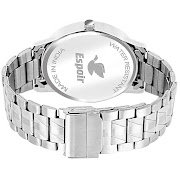sports shoes under 300
SWIGGY Men Canvas Running Shoes, Sports Shoes, Outdoor Shoes Lace -Up
- SIZE: 6UK
- 7UK
- 8UK
- 9UK
- 10UK
- COLOUR: BLACK
- BLUE
- GREY
- RED
- Closure: Lace-Up
- Shoe Width: Medium
- Upper Material: PVC||Sole Material: Canvas
- Colour: Grey
- Closure Style: Lace-Up
- Suitable for: Men
- Care Instructions: Use shoe bags to protect rains and mildew.
PURCHASE LINK:https://amzn.to/2QDdGCg
- GREY COLOUR
BLACK COLOUR
RED COLOUR
BLUE COLOUR
Athletic footwear has become ubiquitous since the mid-1950s, and it is easy to forget that sport shoes were initially designed for a specific purpose—for functionality, comfort, and to maximize athletic performance. As diverse as traditional footwear itself, athletic shoes fall into the following categories: running/training/walking, court sports, field sports, winter sports, outdoor sports, track and field, and speciality shoes (i.e. gymnastics, weight lifting, water, etc.).
Earliest Sport Shoes
Shoe development dates back 10,000 years, stemming from the need for protection from rough terrain. Egyptians used sandals for ball games as far back as 2050 B.C.E. Ancient Roman spiked military shoes called "Caligula" were used as weapons against opponents. Greek athletes in the ancient Olympics preferred running barefoot before adopting sandals in the eighth century
Need for a Better Shoe
The popularity of recreational sports, previously restricted to the wealthy upper class, developed in the late nineteenth century as a response to increased amounts of leisure time by the general public. Public interest in sports coincided with the marathon era and the beginning of the modern Olympics. Of significant importance was the advent of the canvas sport shoe-adopting the term "sneaker" in 1873-that followed Charles Goodyear's 1839 development of vulcanized rubber. From croquet to running, boating, tennis, and bicycling, this multipurpose shoe influenced street fashion with its variations of sateen, canvas, or buckskin uppers and black or brown leather bands.
Mass Production
It was not until the beginning of the twentieth century that mass production of shoes made athletic footwear readily available to the general public. The first great athletic shoemakers, including Joseph W. Foster for Reebok, the Dassler brothers, Marquis Converse, and Leon Leonwood Bean (L.L. Bean) arose at this time. Increased competition in sports accelerated the quest for developing more comfortable, better-performing, flat-soled shoes. As amateur athletes became professional, they influenced the maturity of sports and athletic shoes became more specialized.
Popular Brands
By the 1930s, athletic shoe companies J. E. Sullivan and G. L. Pearce of the Spalding Company, the Dassler brothers (who later split into Adidas, Inc. and Puma, Inc.), Richings of the Riley Company (later renamed New Balance), Chuck Taylor of Converse, and J. Law of England became internationally recognized. Vulcanized rubber sole tennis and basketball shoes, traditionally in black and white shades, were now offered in a variety of colours. Skating boots with Nordic pin binding, previously in black and brown, became available for ladies in white. Interchangeable cleats and nailed-on studs were used for field and winter sports, and track shoes became lighter and more functional.
Modern Design
Out of sheer necessity, protection and function were major factors in the design of many sports shoes. In 1935, inspired by near-fatal accidents involving footwear, Vitale Brahmani invented a multipurpose-soled mountain boot and Paul Sperry created a non-slip sole for boating. L.L. Bean launched his company in 1911 with leather and rubber goloshes that served as a solution to chronically wet feet during his hunting expeditions.
As competition increased on the Olympic track fields and collegiate basketball courts following World War II, better-performing, lighter-weight athletic shoes were highly sought after. Keds and the Converse "sneaker" basketball shoe led the American athletic market while simultaneously becoming an American postwar youth symbol when worn with blue jeans on the streets. Onitsuka Tiger, formed in 1949 and forerunner to the brand Asics, introduced new materials such as nylon uppers and blown rubber wedges and midsoles on their shoes for long-distance runners. New Balance also catered to this group by introducing width fittings and engineering shoes with rippled soles for traction and heel wedges for shock absorption. Bob Lange's mono-bloc polyurethane injected downhill ski boot invented in 1957 was voted the most innovative shoe construction of the century a decade later.






















0 Comments